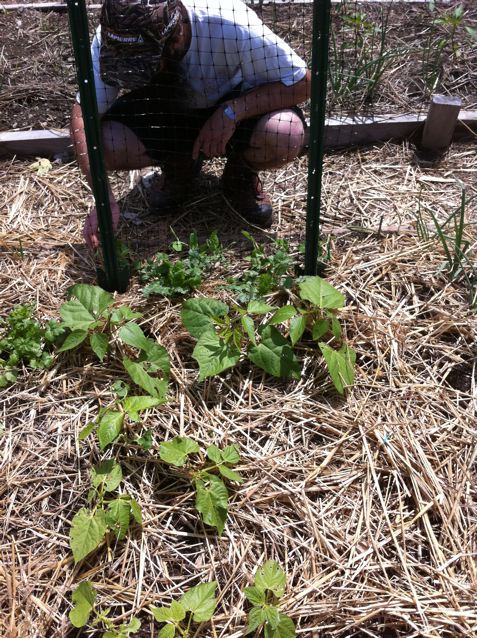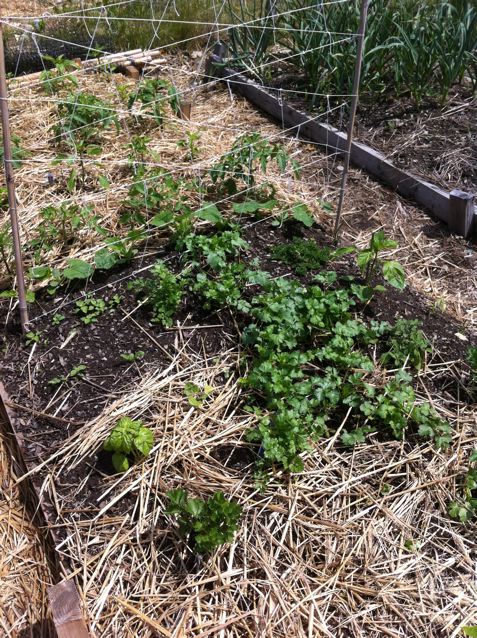Houston, we have a problem. Black and yellow cucumber beetles have landed on the cucumbers! We noticed them over the weekend and did some research to find out how to deal with these pesky buggers. We learned that they attack cucumbers, zucchini, pumpkins, squash and so on. They can even attack beans, eating away the leaves and spreading a bacterial wilt disease. In short, they can ruin your crop. They live in debris and what some bloggers have called “dirty” beds. You can pick them off or buy some organic sprays. Some sites have recommended scented detractors like flowers. I learned that you really have to be proactive, meaning cleaning up your beds in the fall and getting rid of all your cucumber plants at the end of the season. Otherwise, the bugs come back even stronger, merciless.
Monday we decided to get mean. The beetles had first gotten to the zucchini, by far our biggest plant (and possibly healthiest) in the beds. Then it started to spread to the cucumbers, chewing away at the leaves and browning them to a crisp. So we’ve been picking them off and crushing them. The bugs are tiny and congregate in pairs. They can fly so it can be tricky to trap them. We also noticed another type of beetle, this one bigger and flatter. It doesn’t fly and it blends into the soil perfectly. These are found at the base of the plant, again in pairs. They have a thick shell and juicy insides. They’re gross and you may need to look specifically for the legs.
We also cleaned the straw and moved it away from the plants. That seemed to be where they lived the most because a slew of yellow and black beetles were hidden in there, crawling back to the piles of straw. You also have to look under the leaves for small gold sacs, eggs of the beetle.
We even moved a marigold away from the kale to between the rows of cucumbers. So, we’re trying to do whatever we can to save our cucumbers! It also didn’t help that we put them so close together; this makes it easier for the bugs to jump from plant to plant.
This is just one of the lessons we learned, so I’ll call it Lesson #1: Pay attention to spacing! It seems that we put things that need a lot of space, e.g. cucumbers, into a smaller area than they should have. Whereas our beans, onions, and beets could probably be closer together, the cucumbers and squash are boxed in. And we were not consistent at all using rows the length of the bed versus using rows the width (we did both types in no order).
Lesson #2: Go with your gut on pests. We noticed the bugs for a day or two before we decided to actually look into finding out what they were. If we had started to be proactive towards the bugs, they maybe wouldn’t have gotten so out of control. But we were tentative and didn’t think too much about them.
As good as all of this sounds, at the end of the day we have to remember that we’re part of a community garden; we can do as much work in our bed (we may have to break down and buy a recommended spray but I’m hoping not to have to do that) as we can, hopefully solving the problem. But if others don’t care for their beds, there’s no way we can overtake the bugs. Thus is a community garden challenge!
Links to more info on cucumber beetles:
http://www.gardensalive.com/article.asp?ai=910
http://www.hort.uconn.edu/ipm/veg/htms/cukbtltcrop.htm
http://www.uri.edu/ce/factsheets/sheets/cucbeetles.html







You must be logged in to post a comment.